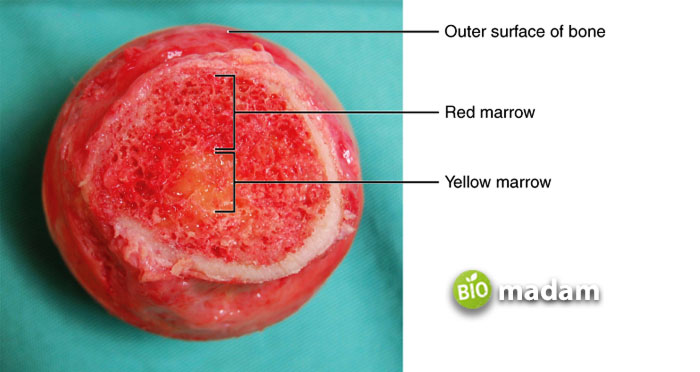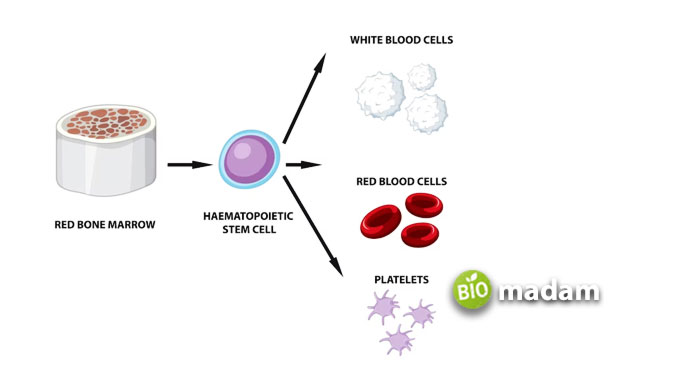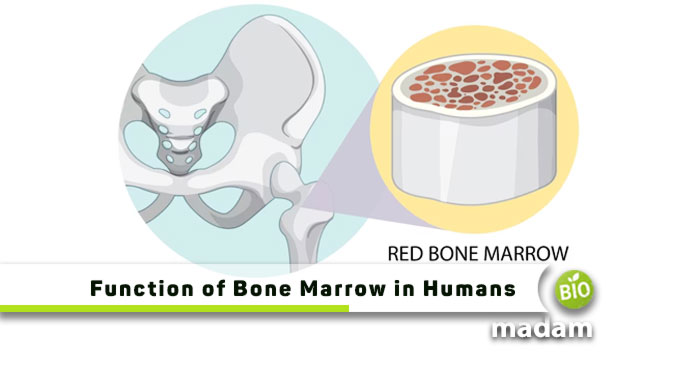The immune system and bone marrow are critical components of the human body and play vital roles. The immune system protects your body, while the bone marrow helps regulate red and white blood cells. But did you know that bone marrow also contributes to the immune system? Bone marrow and the thymus are two essential organs that help the body fight off infections. Let’s look into the functions of the immune system and how they work together to keep us healthy and safe.
What is Bone Marrow?
Bone marrow is the connective tissue found in the hollow center of bones. It is the soft, sponge-like tissue located deep within the bones of mammals. White blood cells, red blood cells, and platelets are all products of bone marrow.
In the bone marrow, the stem cells have the potential to differentiate into many different types of blood cells. These unspecialized stem cells are released into the bloodstream to perform their functions after dividing and determining. The primary roles of the bone marrow, a part of the lymphatic system, are to generate new blood cells and act as a fat storage depot.

Functions of Bone Marrow in the Immune System
Bone marrow has a significant role in protecting the body against diseases and infections. Some of the functions of the bone marrow in the immune system include:
Hematopoiesis
Hematopoiesis is the process of formation of blood cells, and bone marrow is the main site of cell formation. It includes the production of all types of immune cells, such as B cells, T cells, and NK cells.
B cell Maturation
B cells, responsible for producing different types of antibodies, mature in the bone marrow before entering the bloodstream. During development, B cells undergo a process of selection and refinement, ensuring that they can recognize and respond to a wide range of antigens.
T cell Maturation
T cells are responsible for recognizing and attacking infected cells. T cells begin forming and differentiating in the bone marrow before moving on to the thymus gland for maturation, like B cells. Bone marrow stem cells travel to the thymus for further growth into adult T lymphocytes.
Immune Cell Proliferation
Bone marrow provides the necessary environment for immune cells to divide and proliferate, enabling the immune system to respond to various infectious agents.
Immune Cell Differentiation
Bone marrow differentiates immune cells, ensuring the immune system can respond appropriately to various pathogens. This process is essential to provide different types of immunity per need.

Types of Bone Marrow
Bone marrow tissues have two distinct types: red and yellow bone marrow. Red bone marrow predominates in the human skeleton from infancy through early adolescence. Red marrow is the tissue responsible for producing red blood cells, platelets, and the majority of white blood cell types. Most of it is located in the flat bones of the skull, ribs, sternum, vertebrae, and pelvis. Yellow bone marrow gradually takes the place of red marrow as we age. Long bones in the arms and legs contain yellow bone marrow, mainly composed of fat cells but can also produce some types of white blood cells in times of emergency.
The Bottom Line
The bone marrow is a critical part of the human immune system as it is involved in the production and maturation of various cells. The main functions of bone marrow in the immune system include hematopoiesis, immune cell maturation, differentiation, and proliferation. Thus, the bone marrow is the main site of immune cell production and development before they leave the bone marrow for further maturation.
FAQs
What are the functions of bone marrow and thymus?
The bone marrow produces blood cells, including white blood cells, that contribute to immunity. At the same time, the thymus prepares T-lymphocytes which travel from the bone marrow to the thymus. These T cells enter the bloodstream after maturation.
Why do we need bone marrow?
The bone marrow is the site of hematopoiesis, making it a critical part of the body. It produces red blood cells, white blood cells, and platelets. All these cells are necessary for body functions, making bone marrow a vital part of human anatomy.
How does bone marrow make blood cells?
The bone marrow produces cells from the stem cells, called hemocytoblasts, in the red bone marrow. The stem cells develop into proerythroblasts, forming the erythrocytes or red blood cells.
What is the normal physiology of bone marrow?
The bone marrow is present between the bones and contains a rich network of blood vessels, making it highly vascularized and innervated. A steady blood supply is essential for the production of cells.

Hello, I would like to introduce myself to you! I am Chelsea Rogers, an experienced blog writer for science articles, holding an MPhil degree. My enthusiasm to grab the best knowledge, let it relate to botany, zoology, or any other science branch. Read my articles & let me wait for your words s in the comment section.

